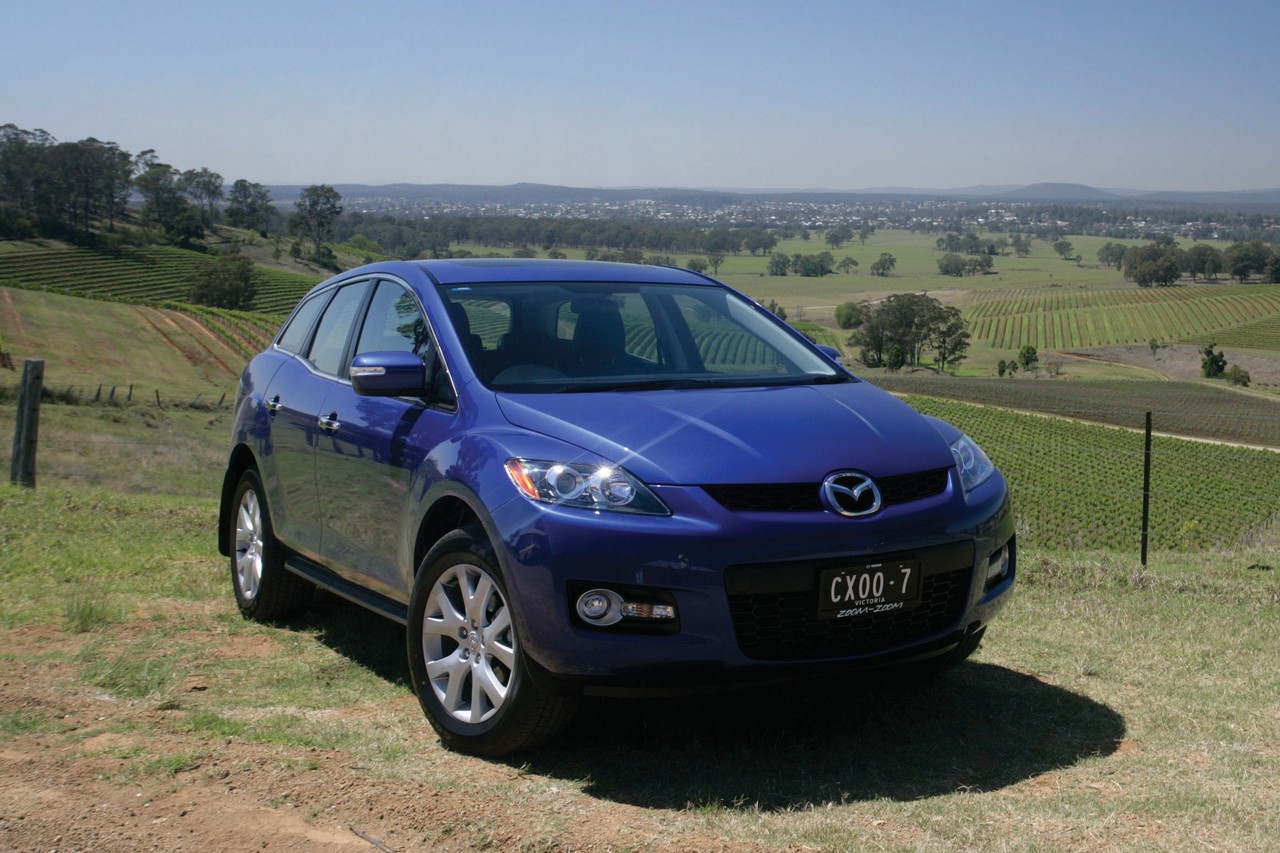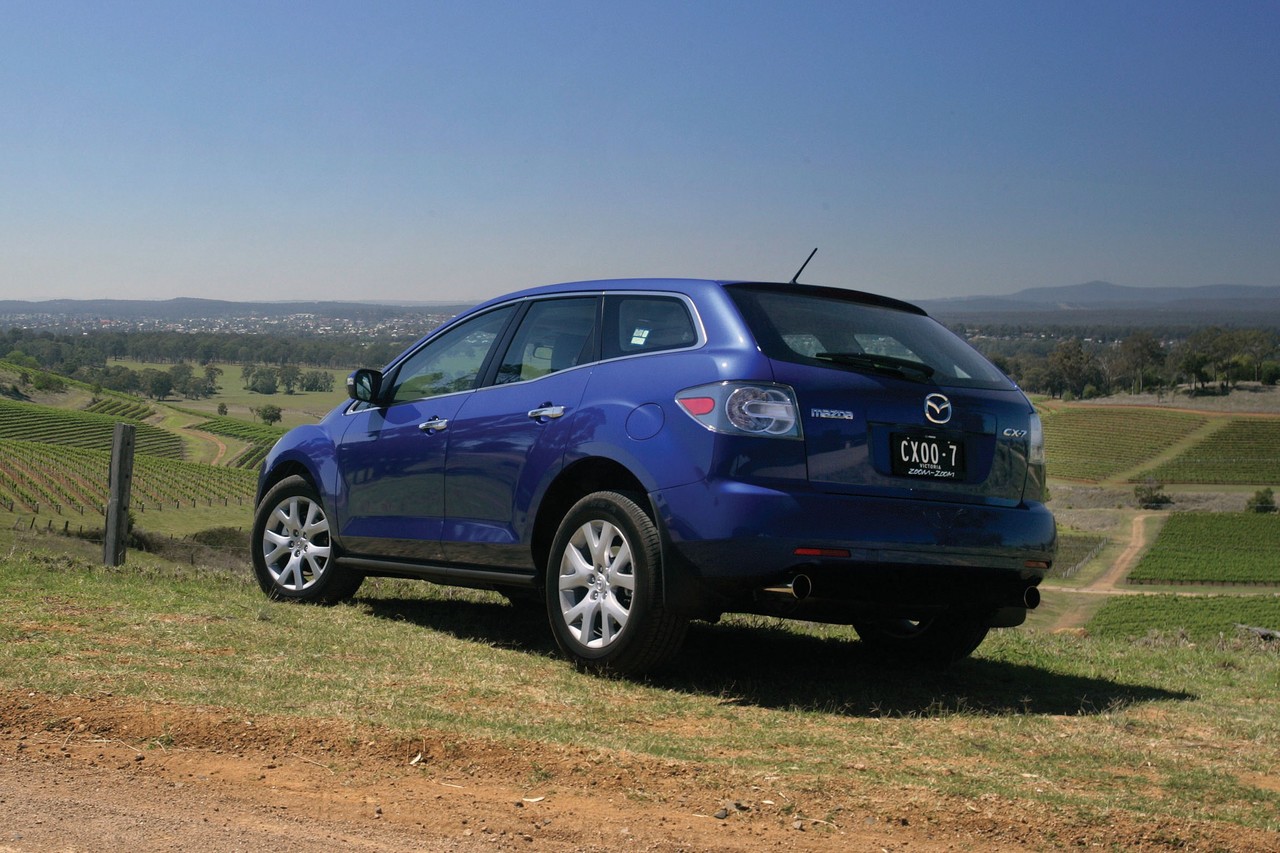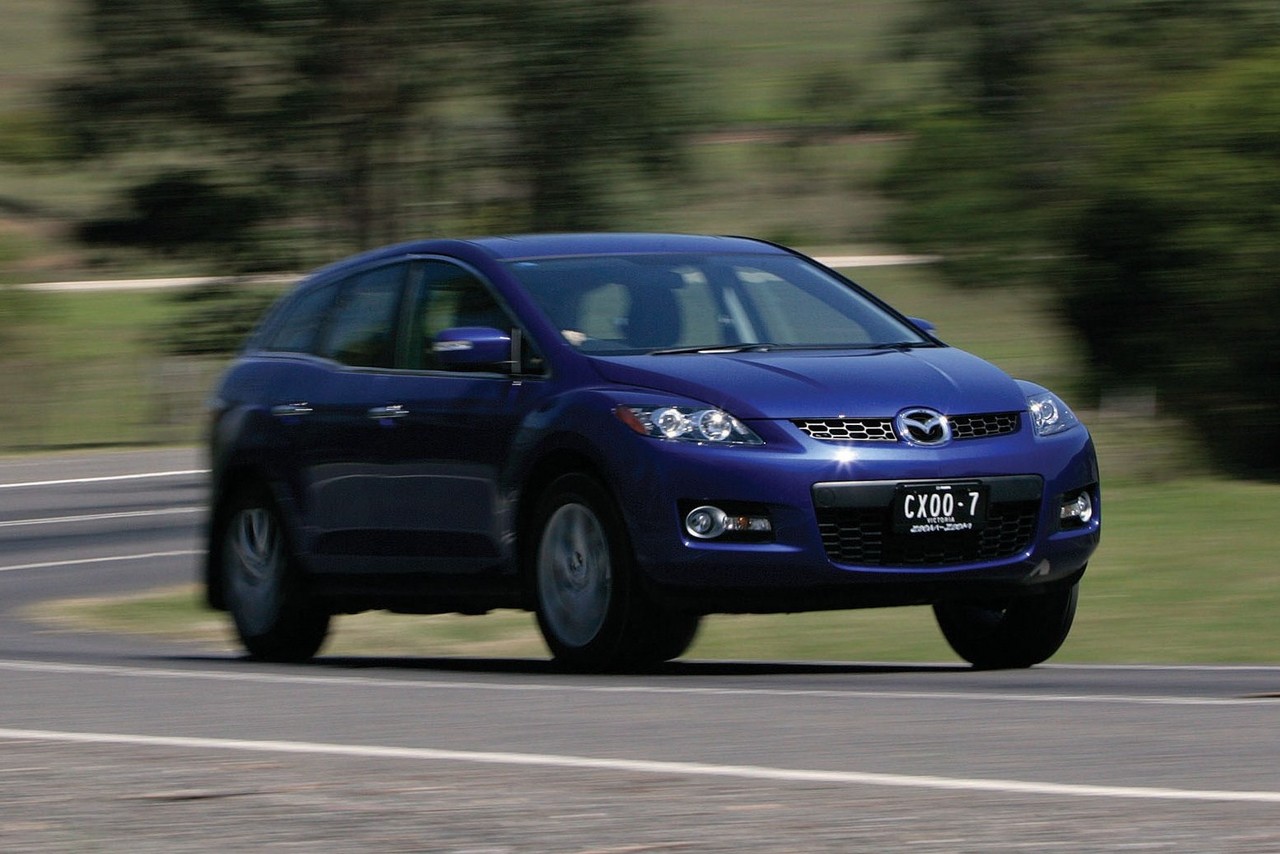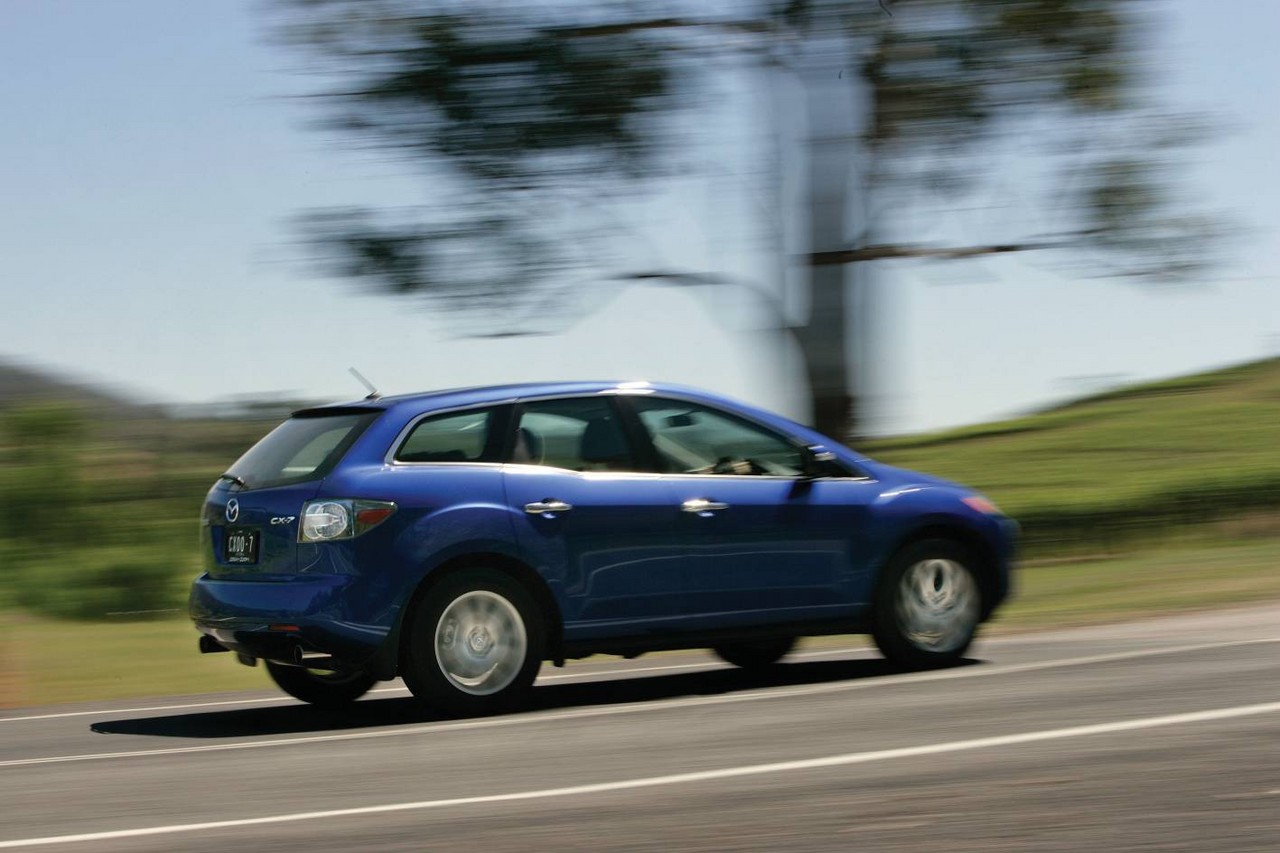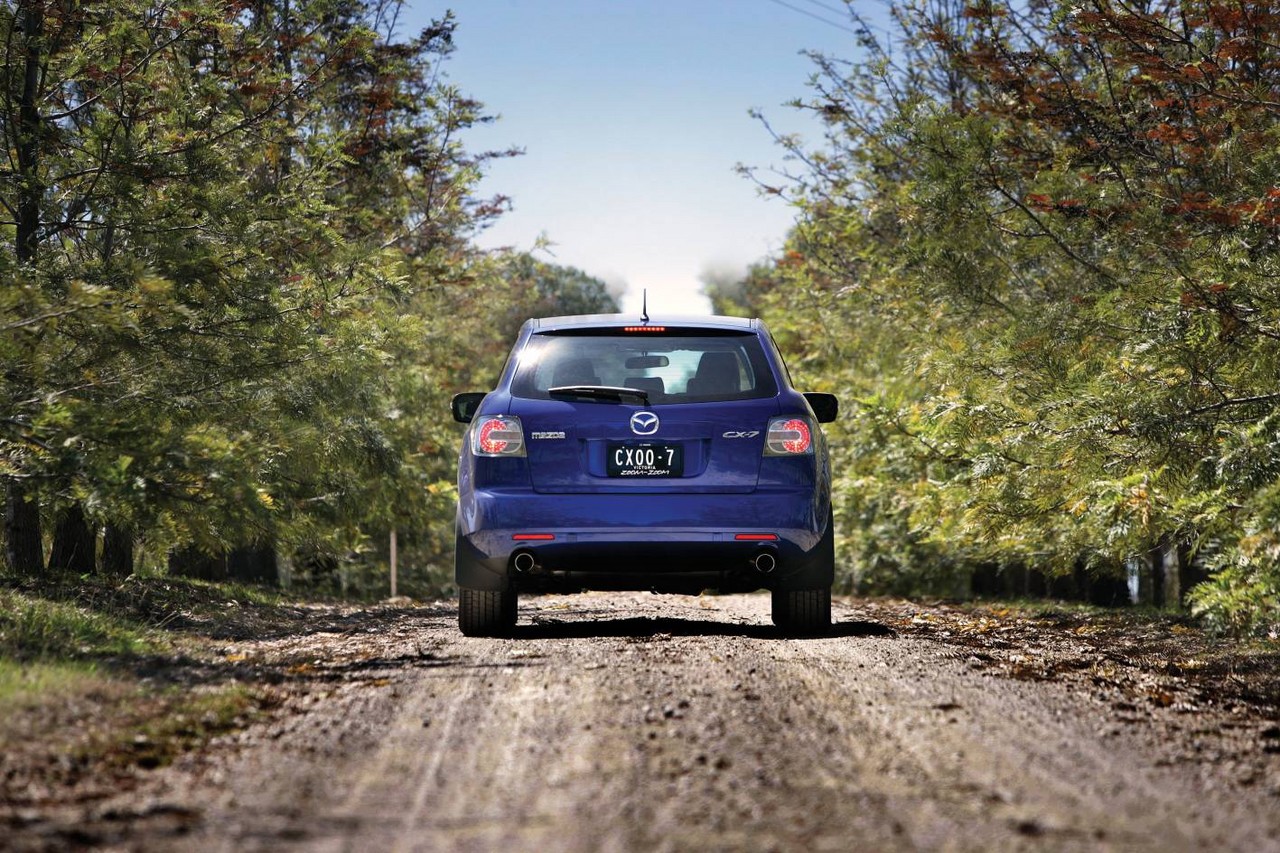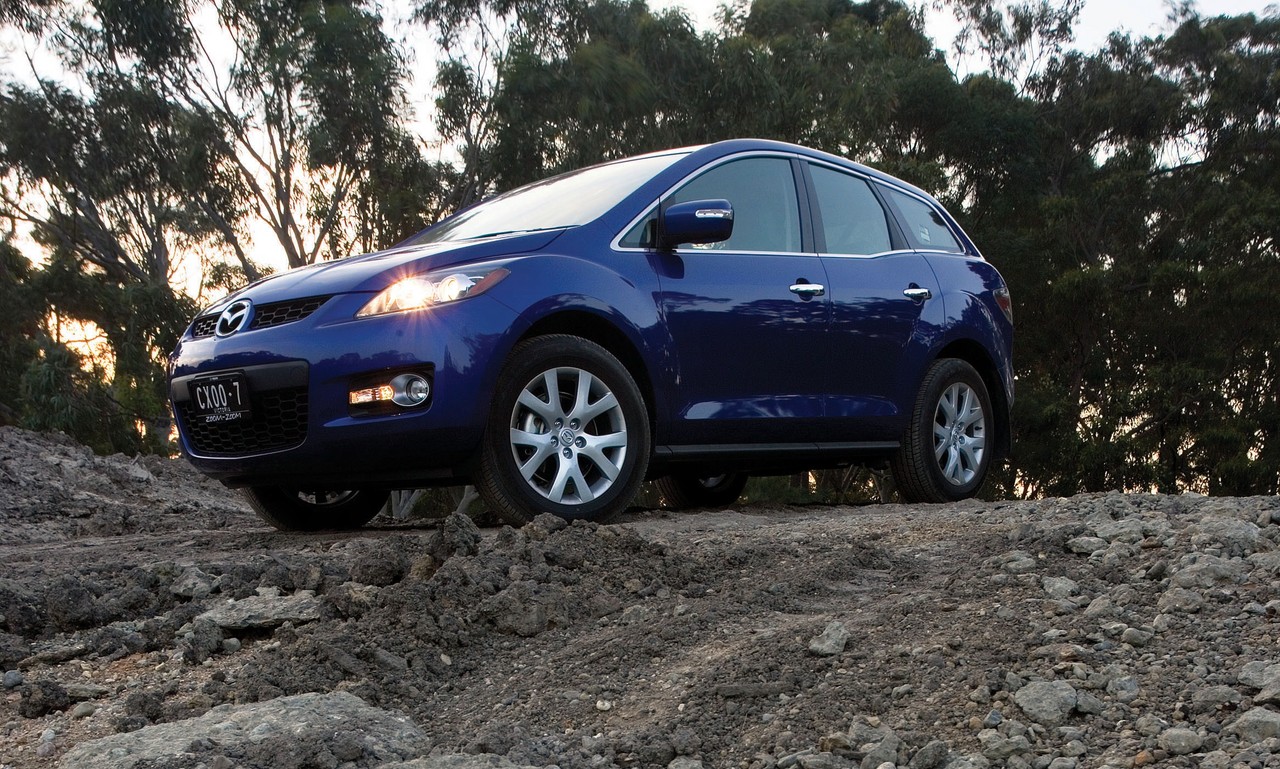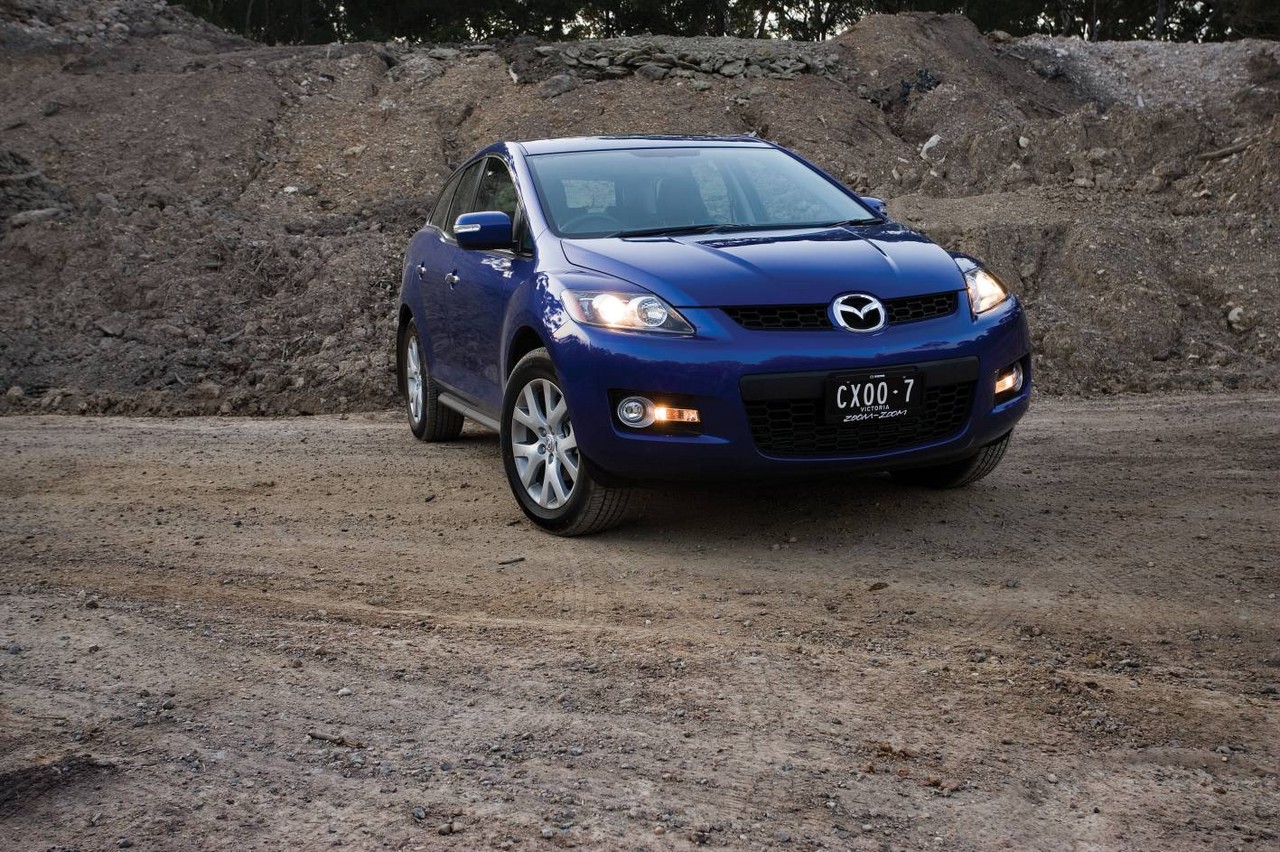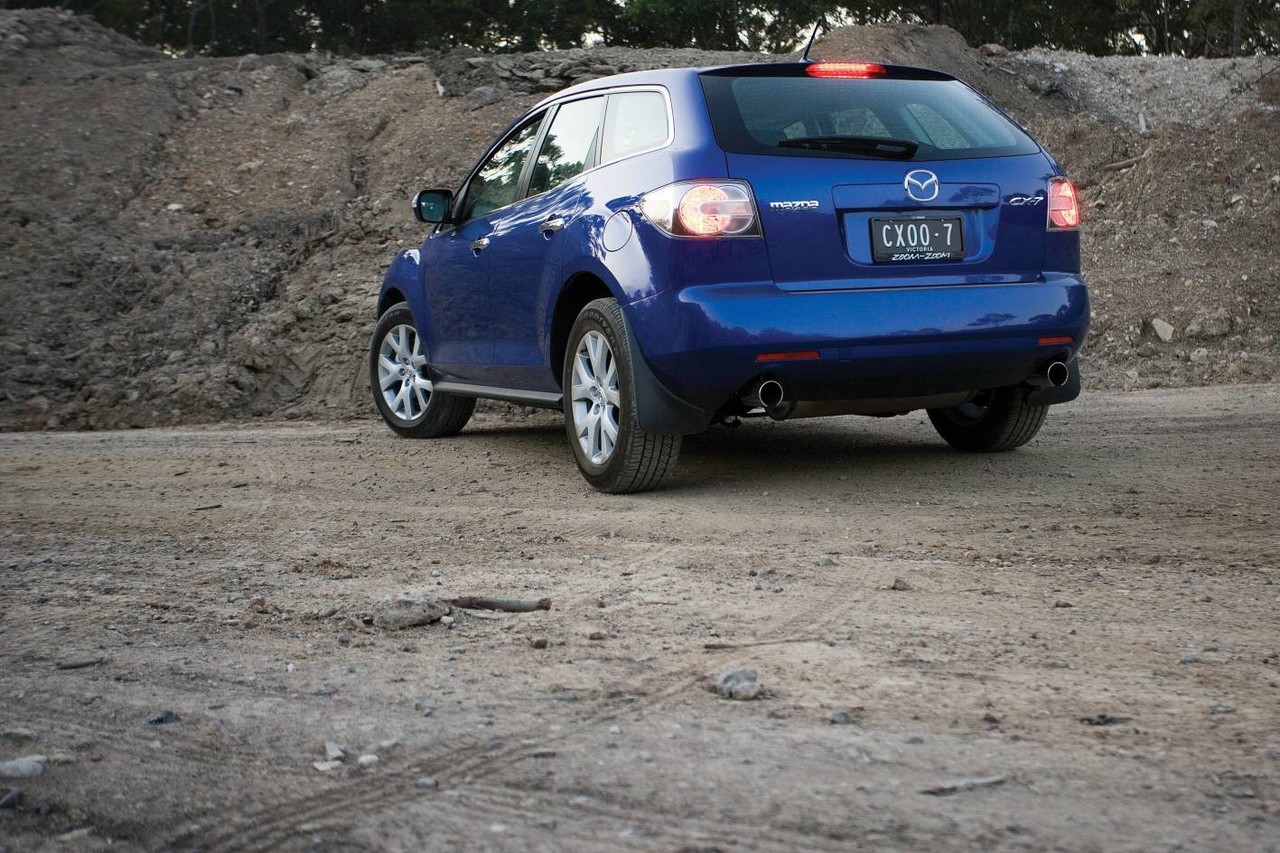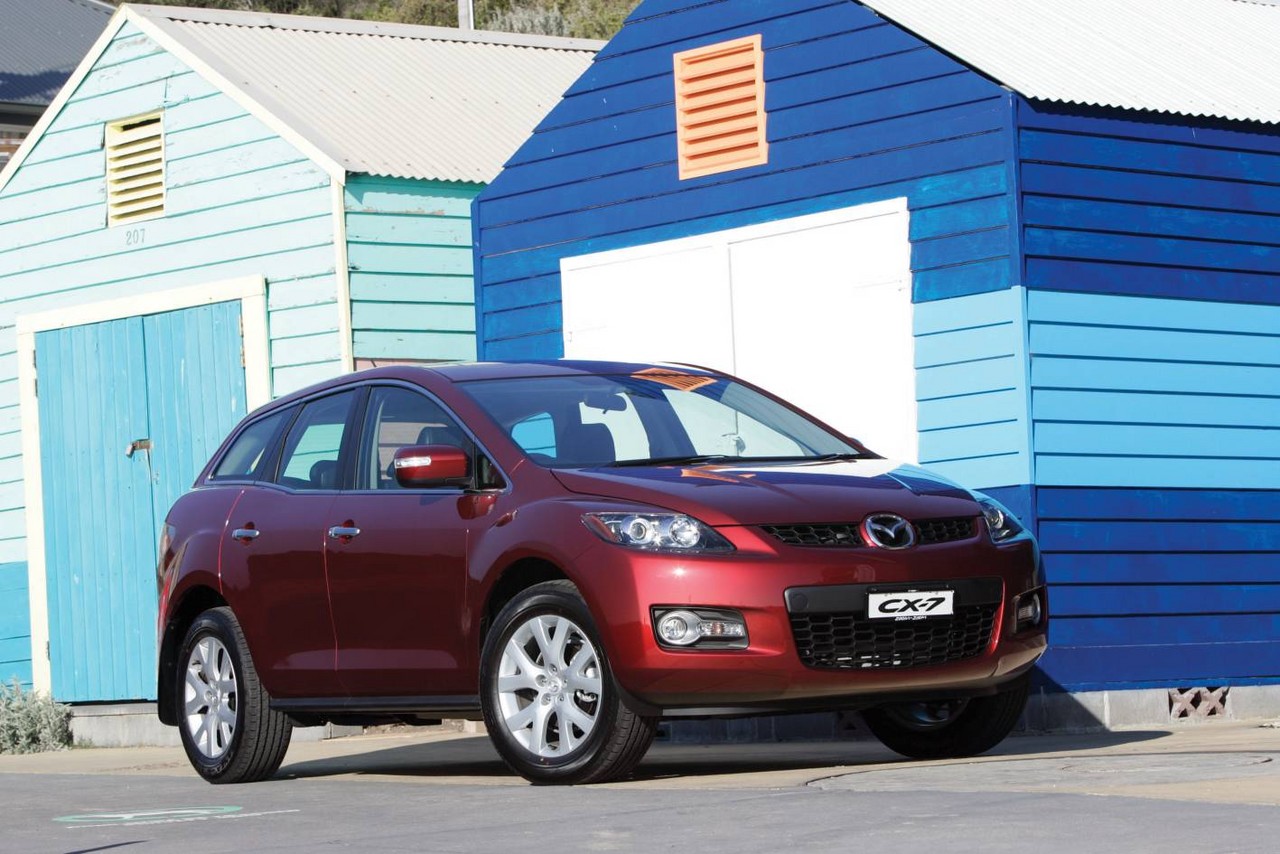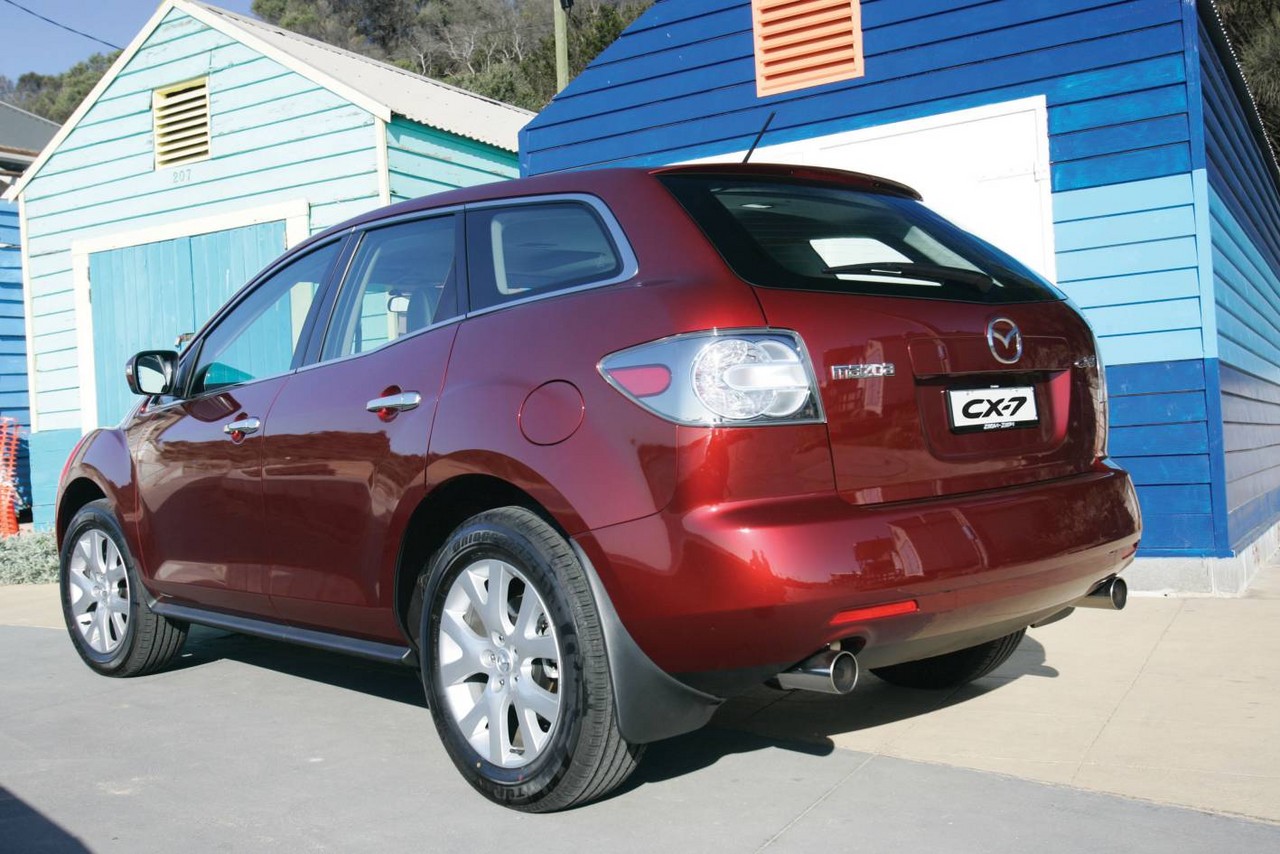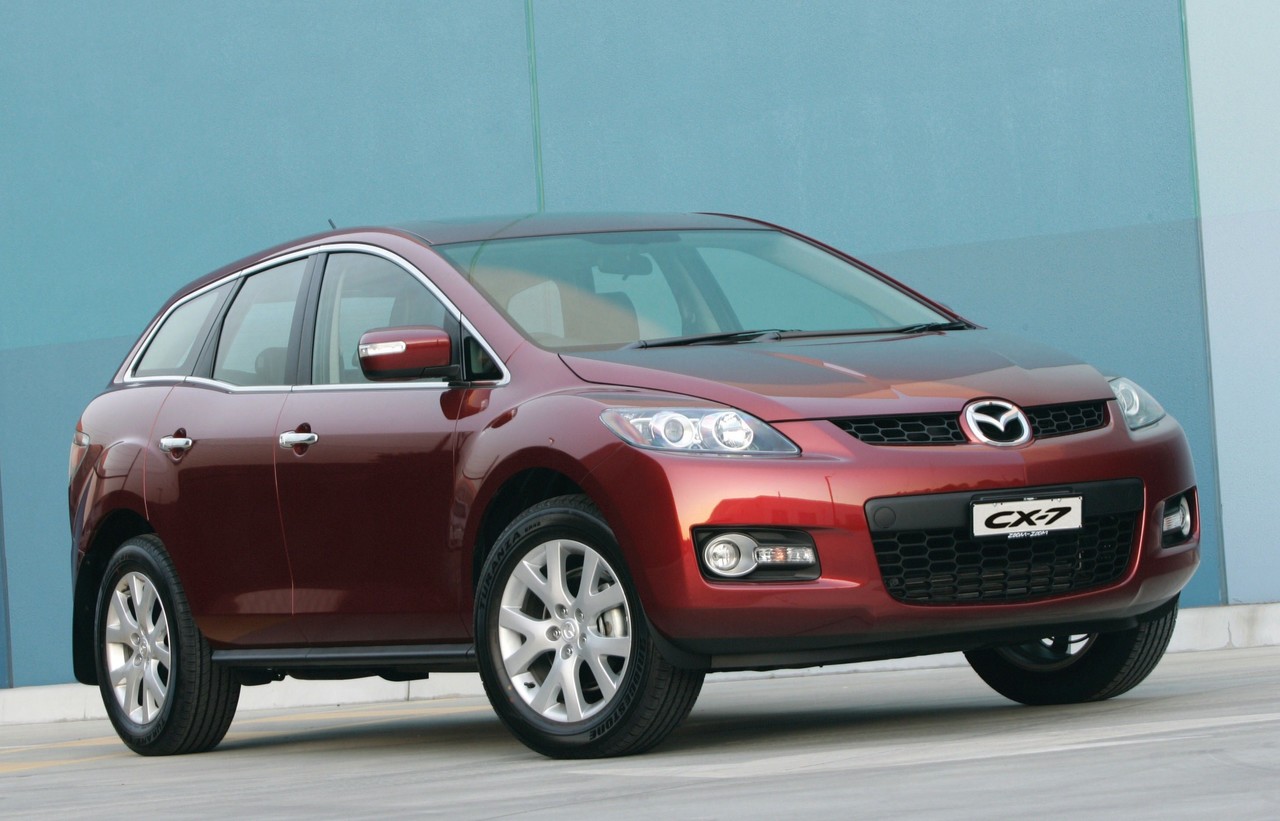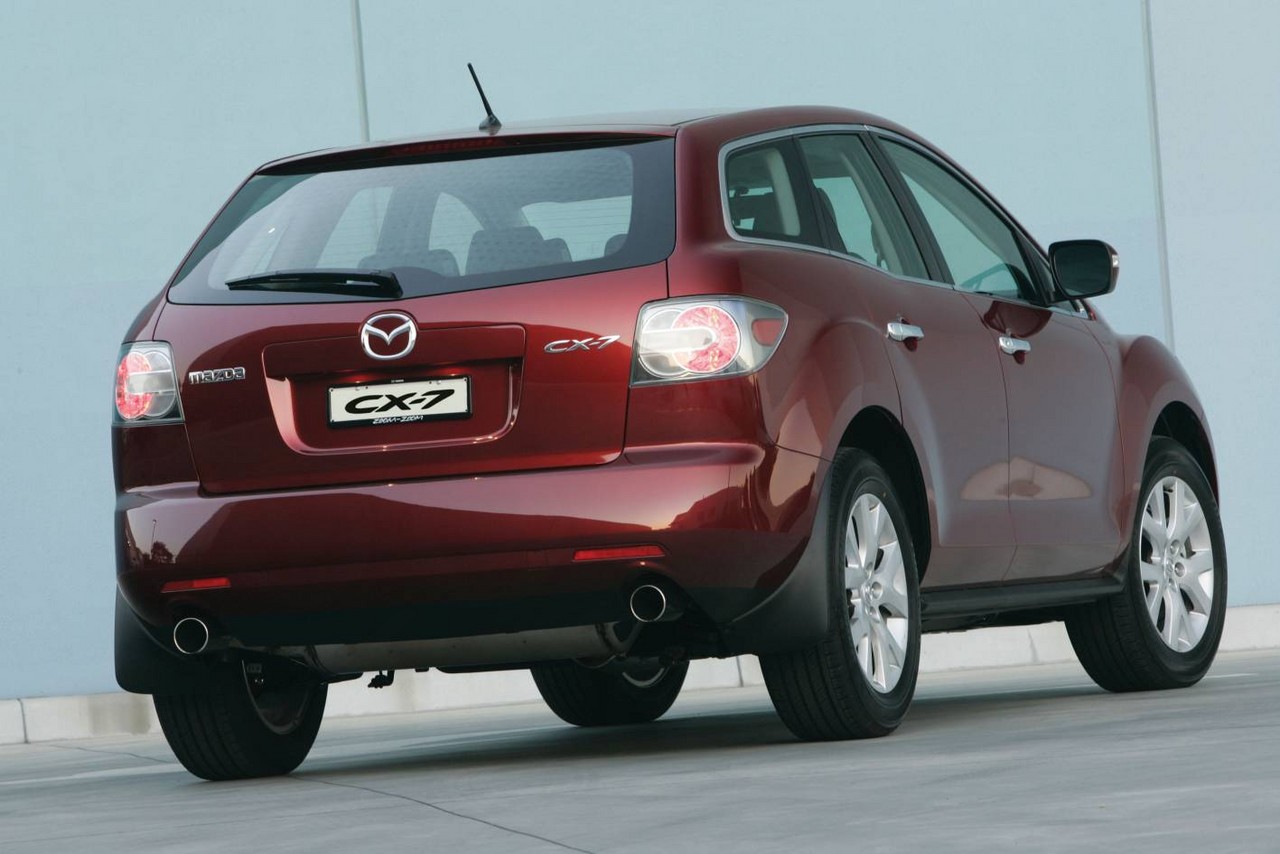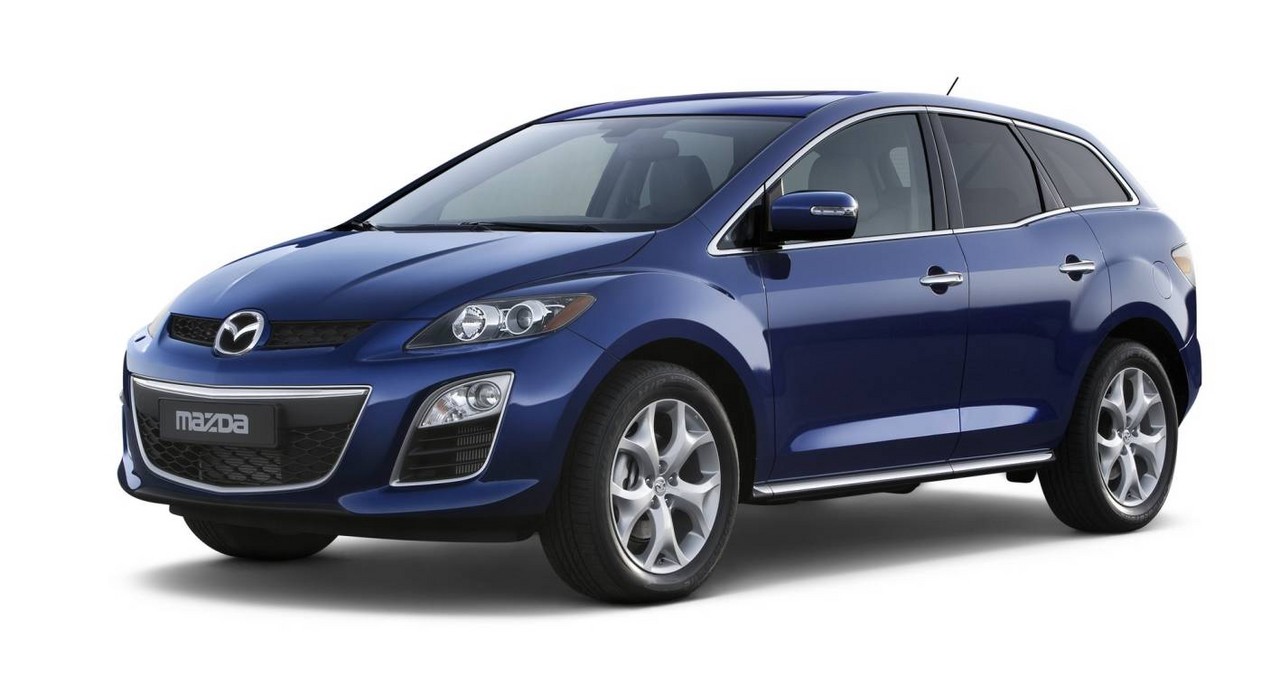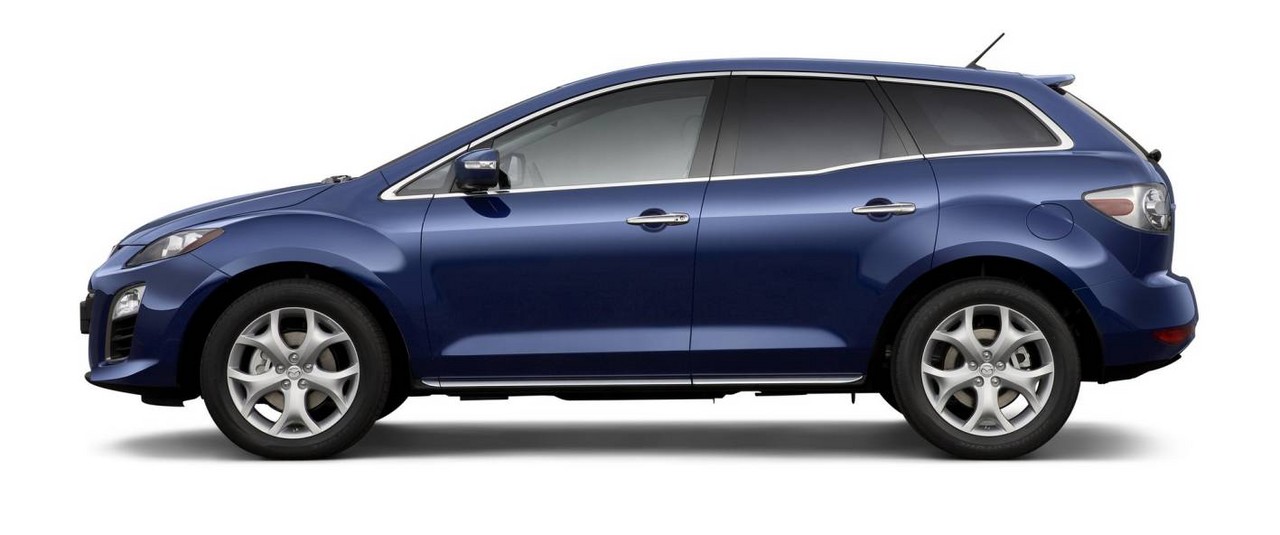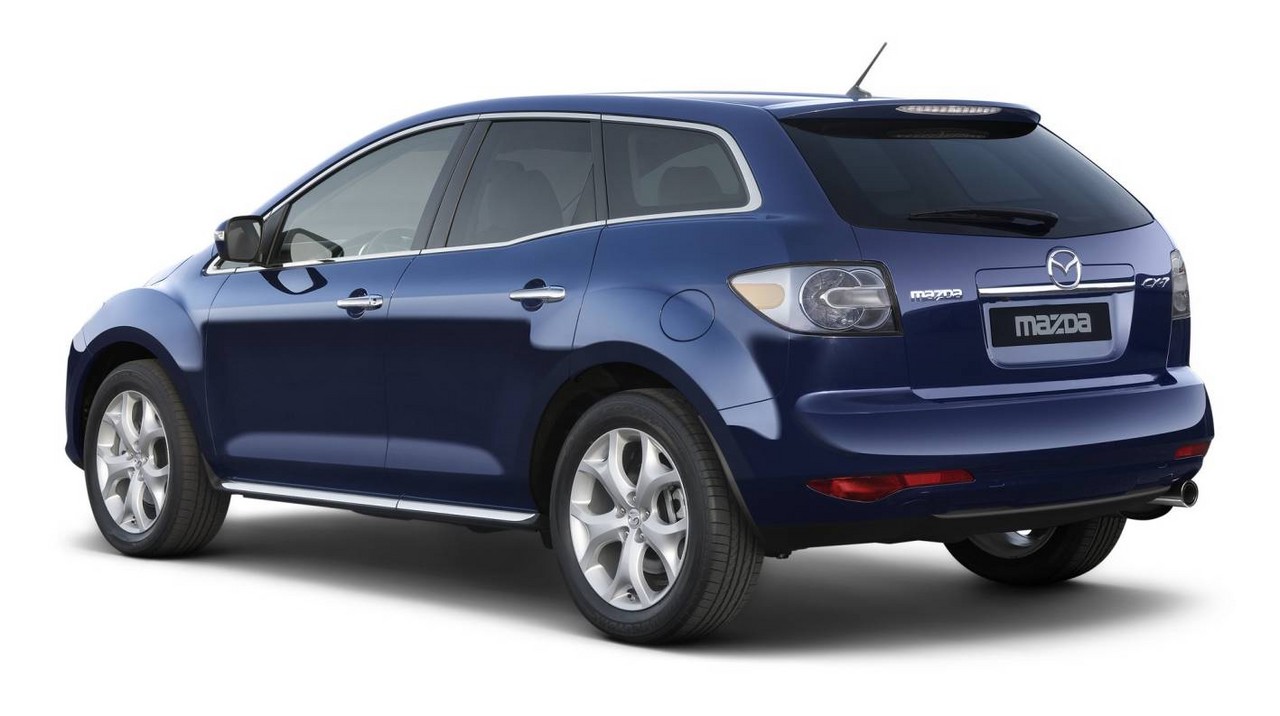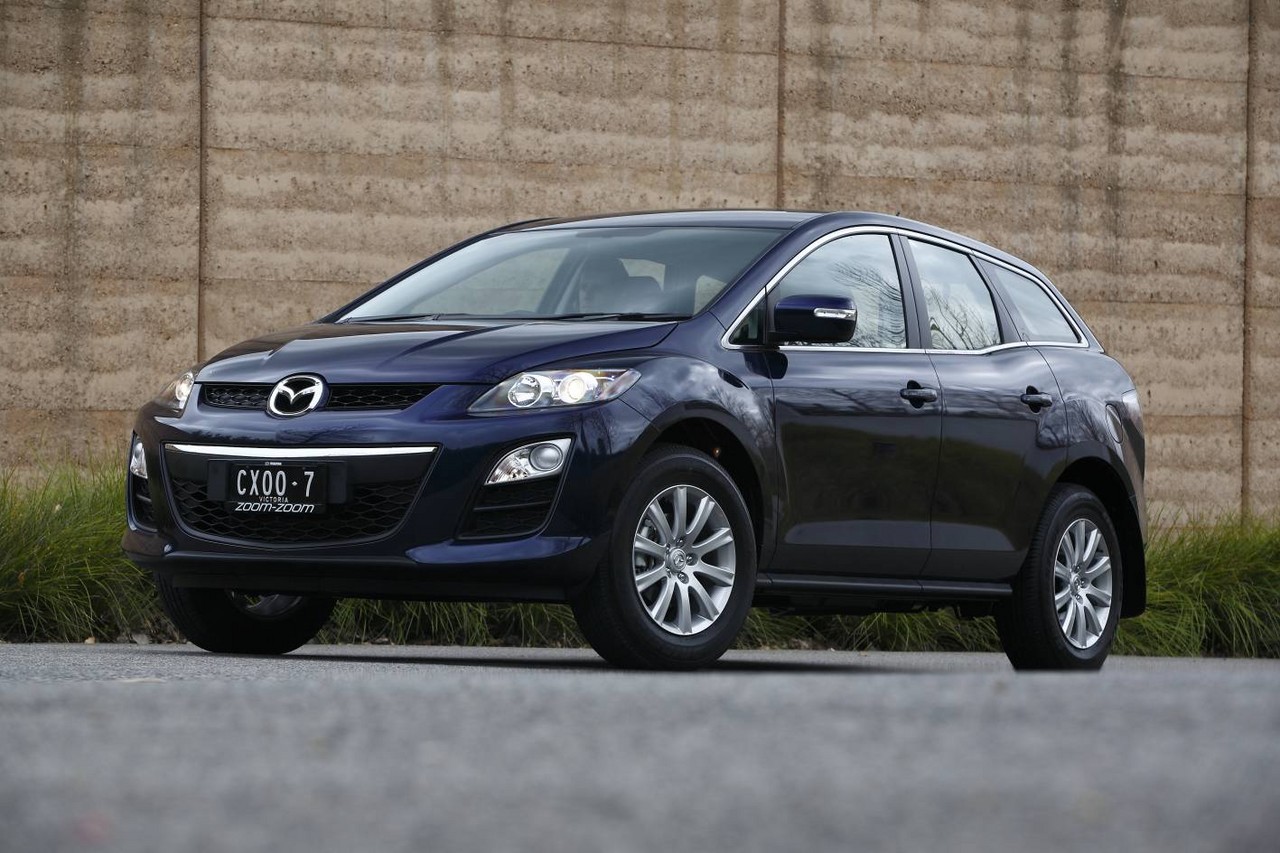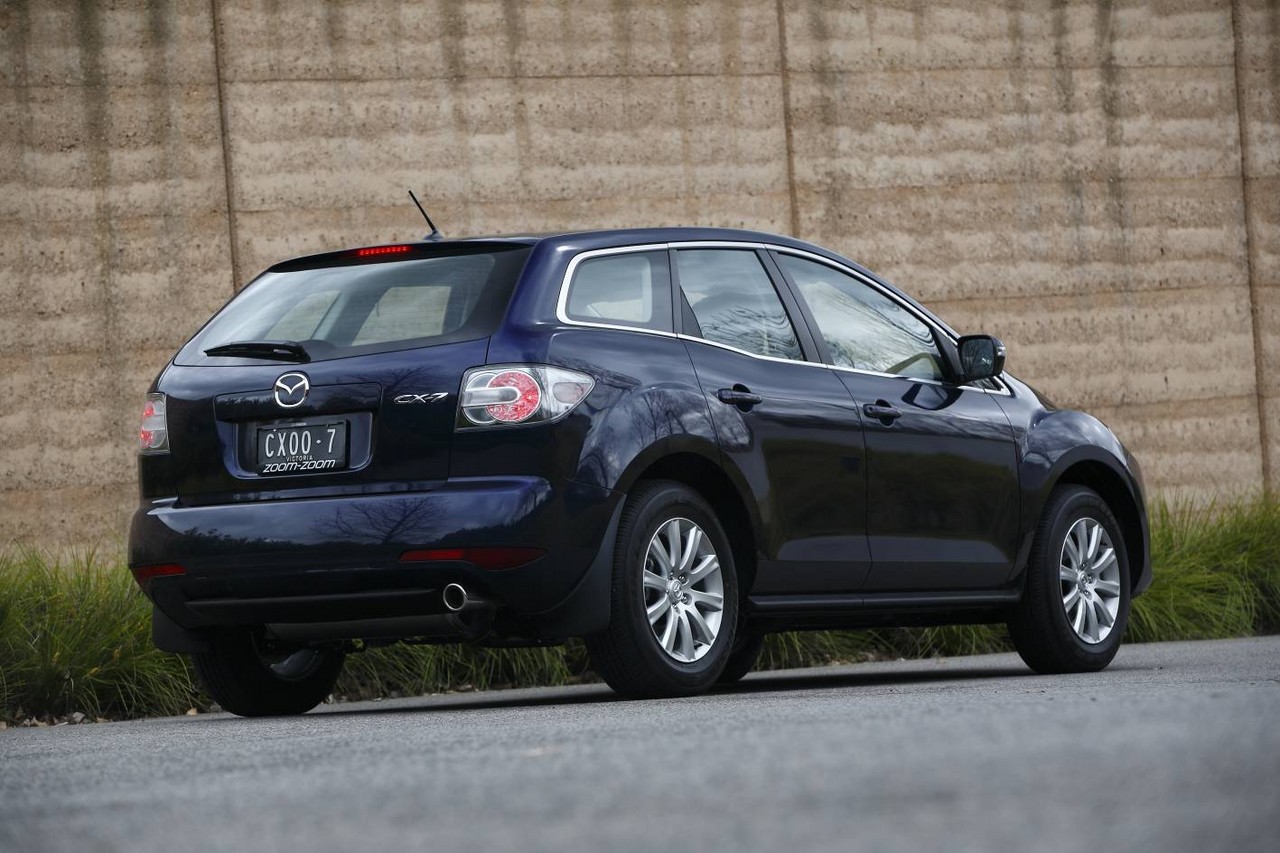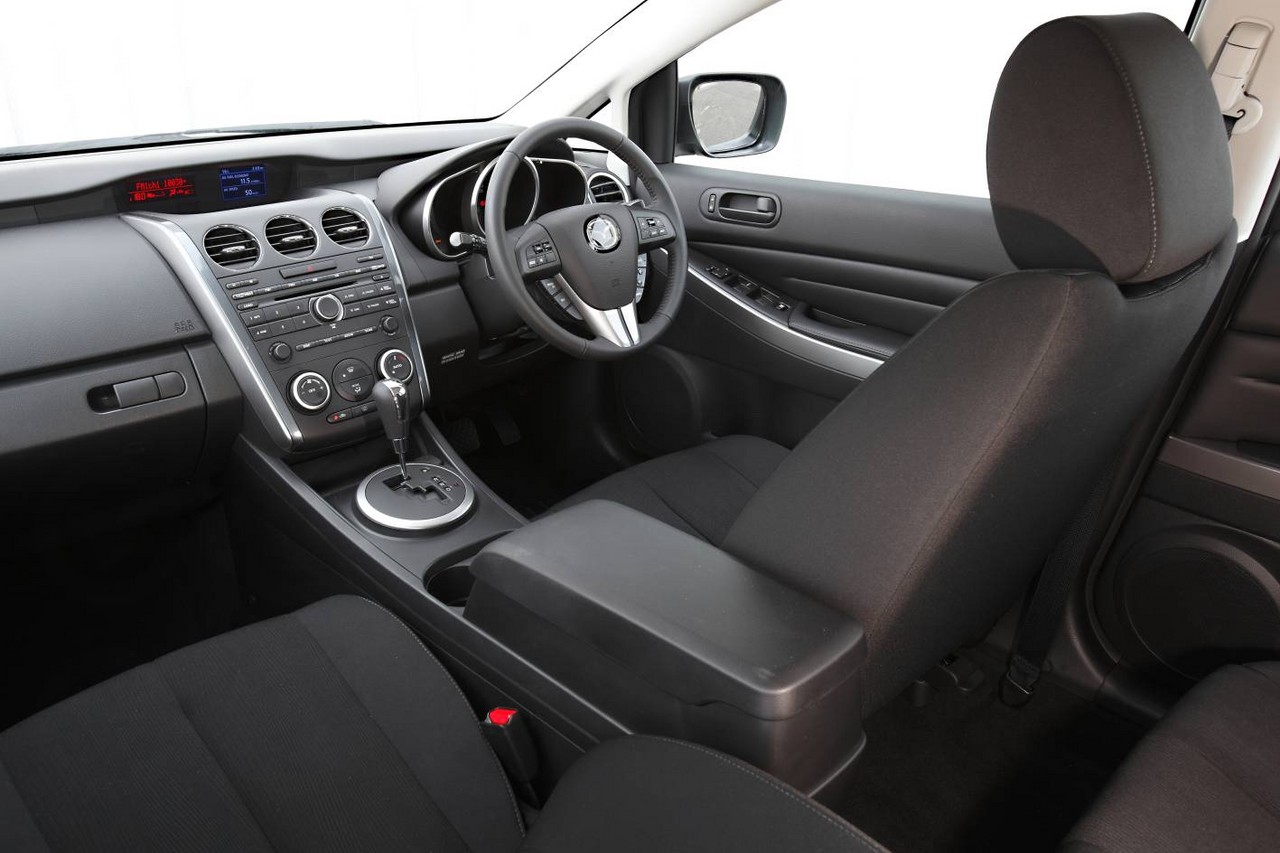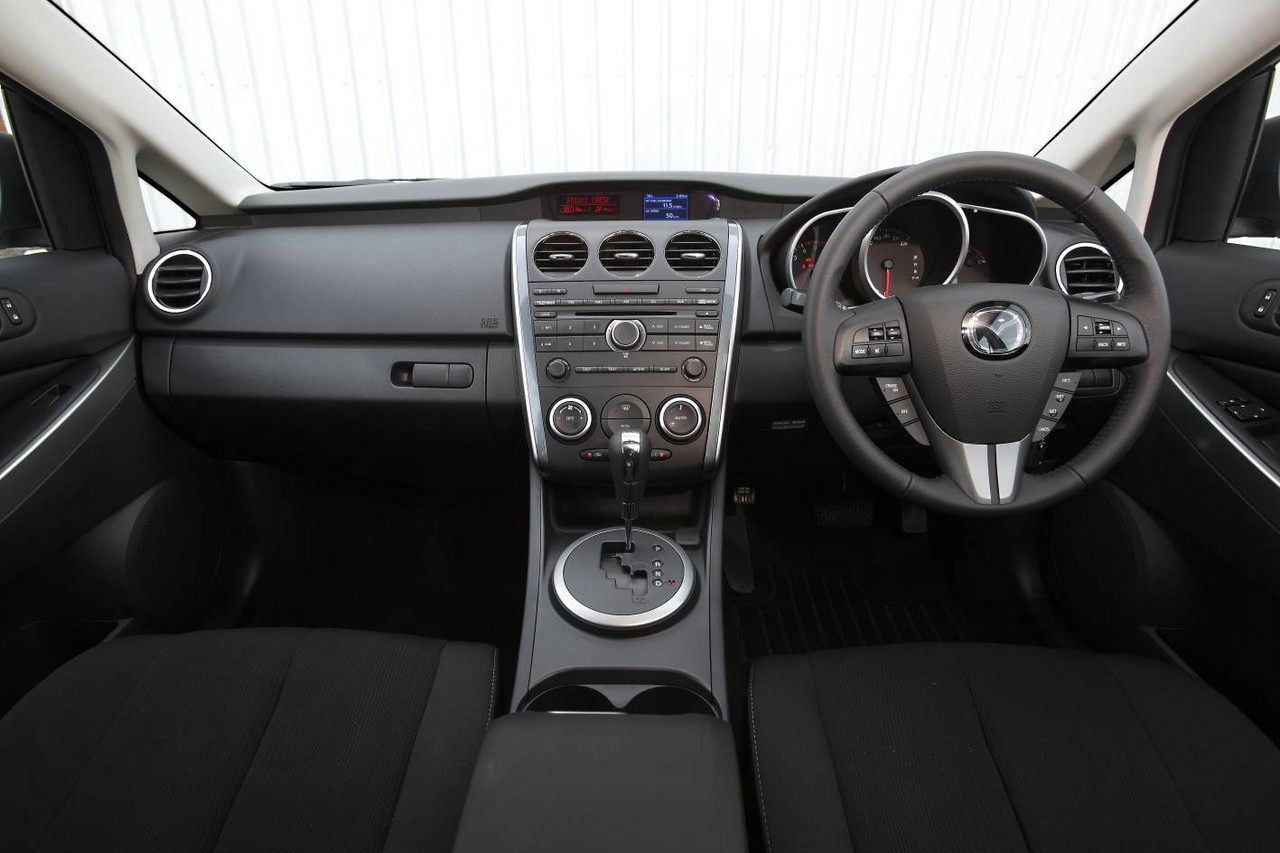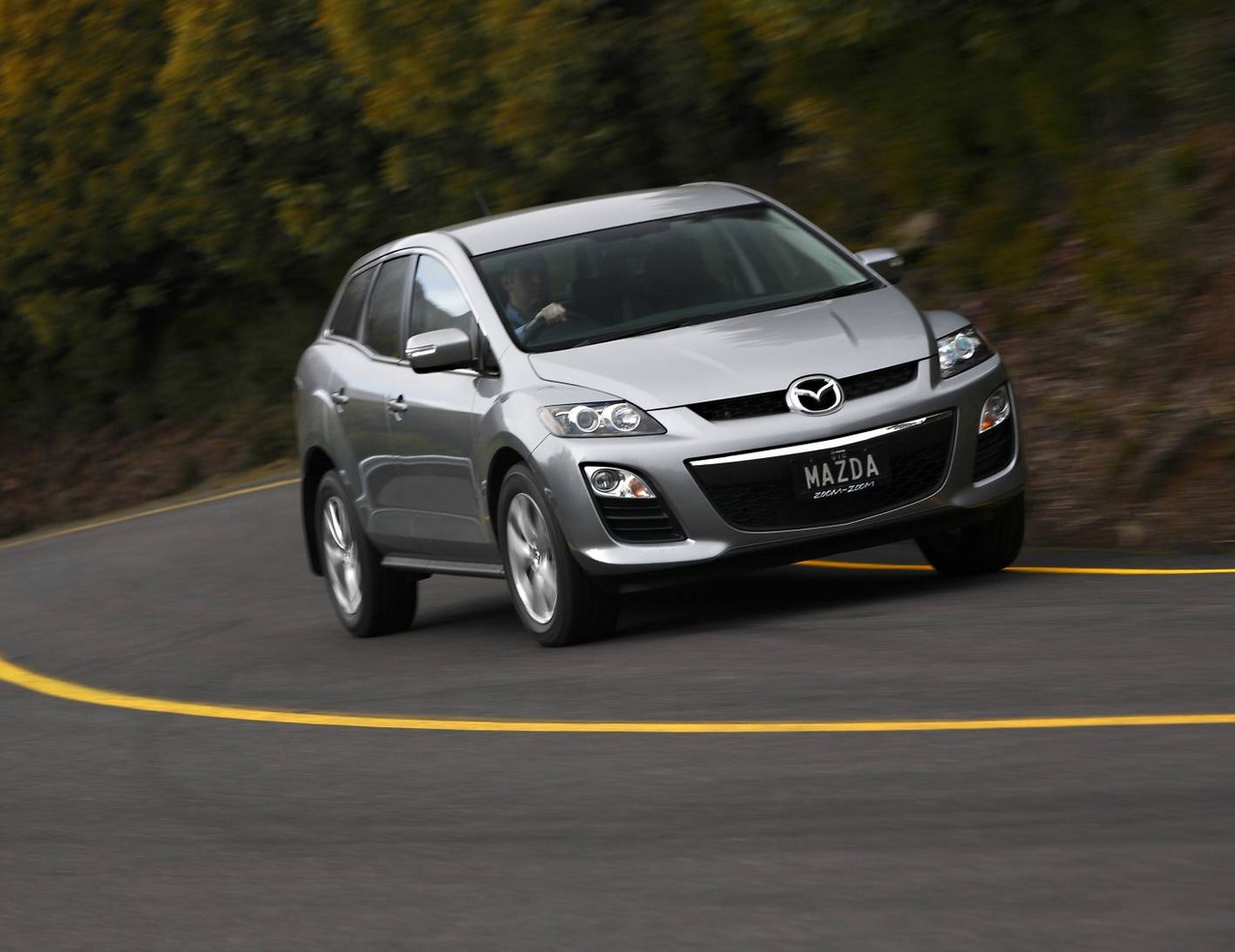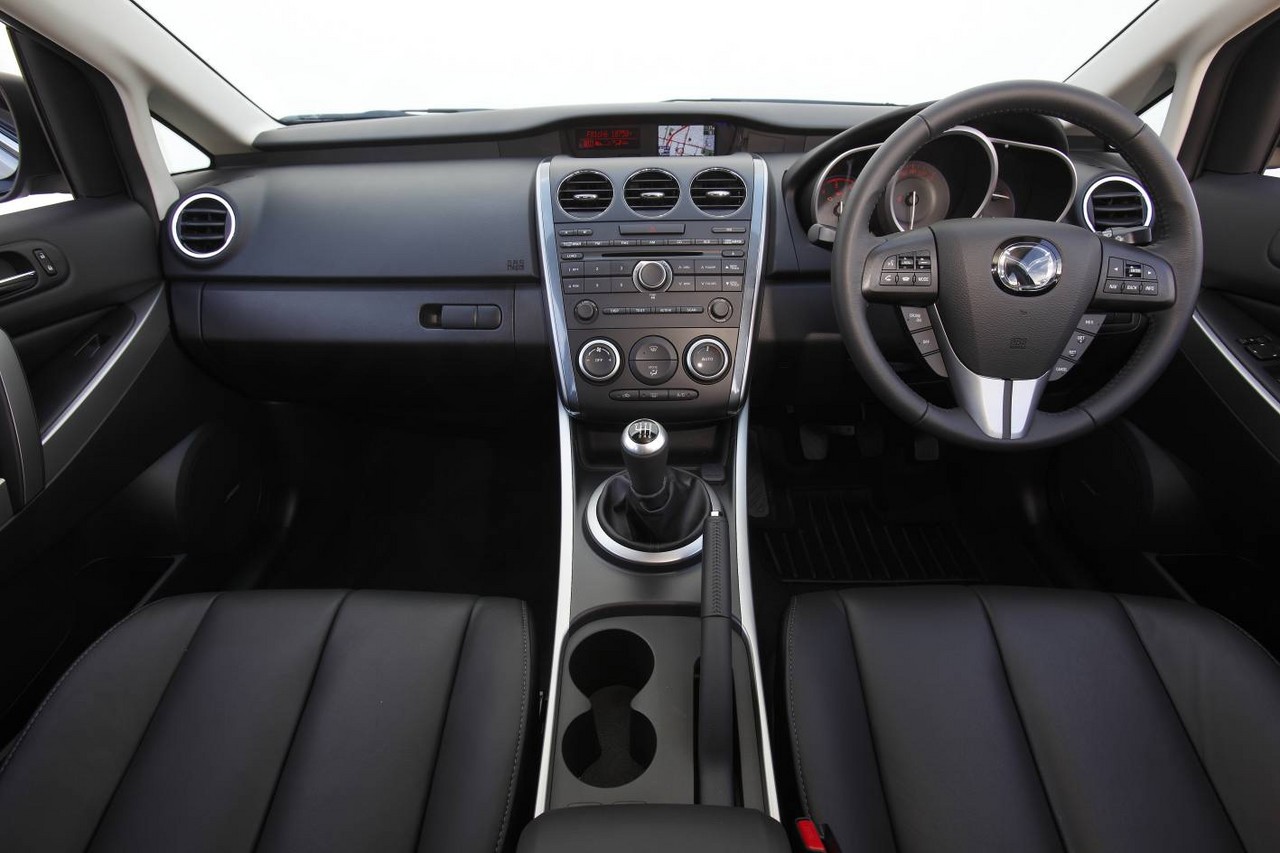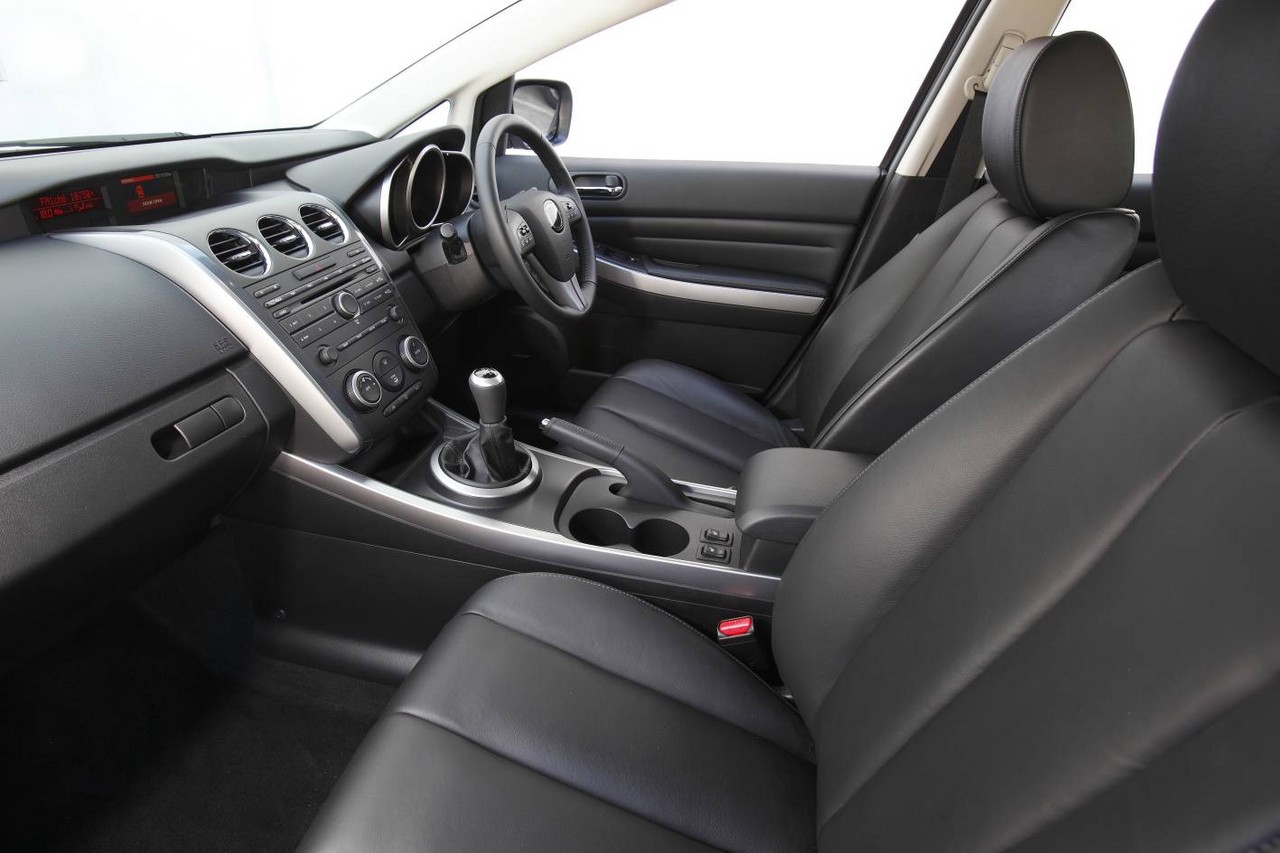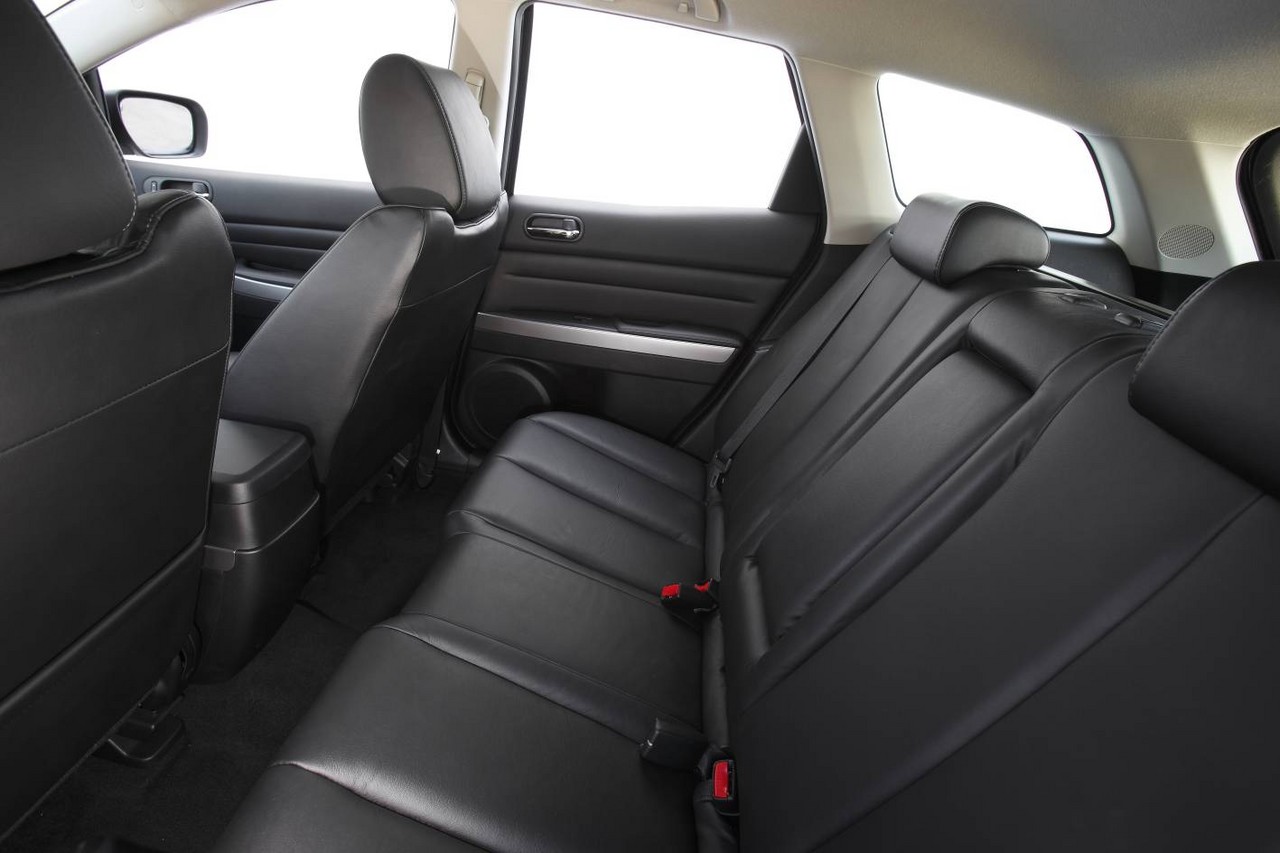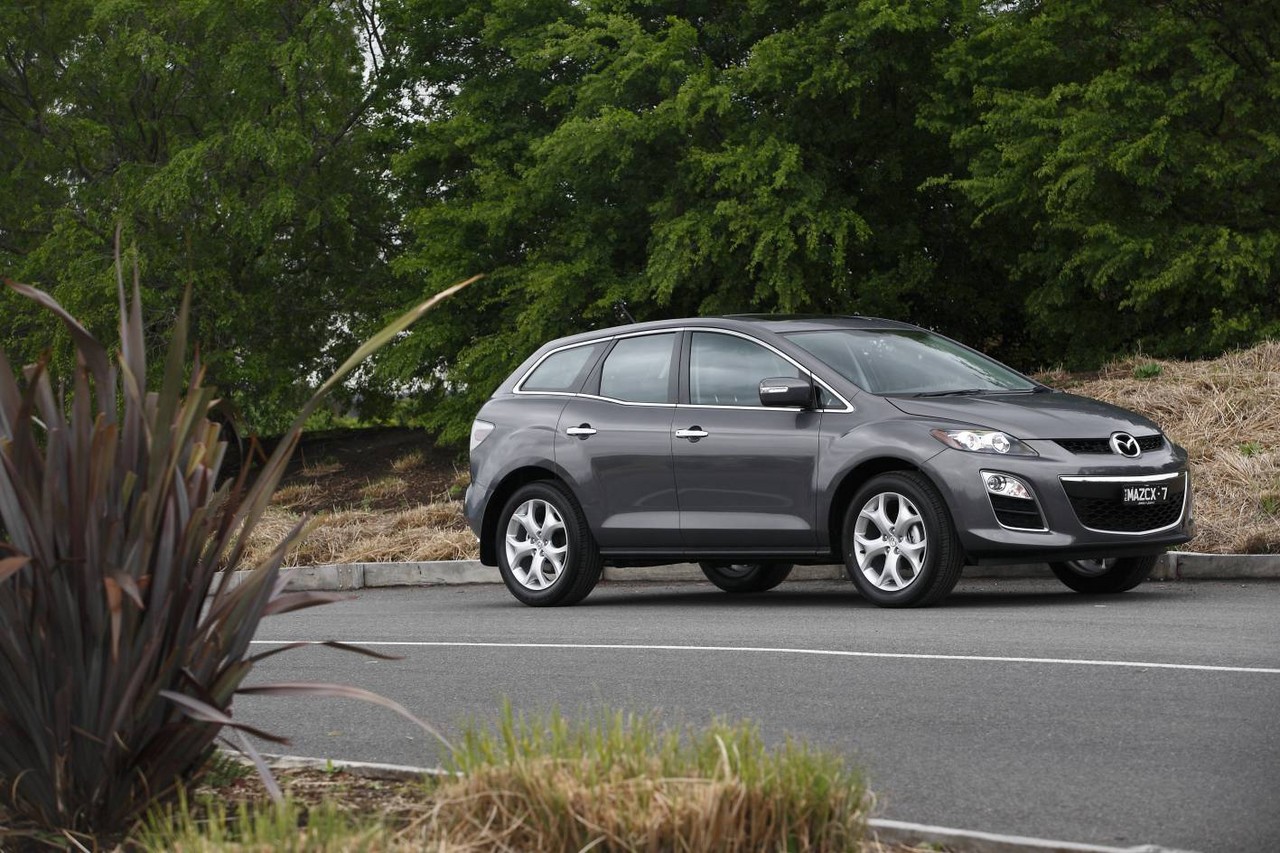
- Responsive 2.3-litre turbo petrol engine
- Intuitive automatic transmission
- Impressive, agile dynamics
- Comfortable interior
- Suspension lacks low-speed compliance
- Poor visibility for rear seat occupants
- High fuel consumption for 2.3-litre turbo engine
Review: Mazda ER.I CX-7 (2006-09)
Overview
Released in November 2006, the Mazda ER Series I (ER.I) CX-7 was a five-seat SUV. Manufactured in Hiroshima, Japan, the Mazda ER.I CX-7 was powered by a 2.3-litre four-cylinder direct-injection turbocharged engine that was mated to a six-speed automatic transmission. The CX-7 range initially consisted of two variants: an unnamed, price-leading variant and the Luxury. In 2007, however, the unnamed entry-level variant was re-named the ‘Classic’.
Dimensions
Compared to the Mazda Tribute which it effectively replaced, the Mazda CX-7 was 280 mm longer (at 4680 mm), 94 mm wider (1872 mm), 125 mm lower (1645 mm) and had a 130 mm longer wheelbase (2750 mm).
Suspension and steering
The Mazda CX-7 had MacPherson strut front suspension and multi-link rear suspension.
While CX-7 models with petrol engines had hydraulic power-assisted steering (HPAS), the steering pump for diesel-powered CX-7 models – available from 2009 – was driven by an electric motor (Mazda’s Electro-Hydraulic Power Assisted Steering or EHPAS).
| Variant | Years | Engine | Trans. | Peak power | Peak torque |
|---|---|---|---|---|---|
| [Unnamed] | 2006-07 | 2.3-litre L3-VDT turbo petrol I4 | 6sp auto | 175 kW at 5000 rpm | 350 Nm at 2500 rpm |
| Classic | 2007-09 | ||||
| Luxury | 2006-09 |
AWD system
All models within the ER.I CX-7 range were fitted with Mazda’s ‘Active Torque-Split’ all-wheel drive system. In normal conditions, the system sent all power to the front wheels for maximum fuel economy. In the event that the front wheels began to lose traction, however, two computer-controlled magnetic clutches – housed within the rear differential – would engage to direct up to 50 per cent of the engine’s torque to the rear axle (i.e. a 50:50 front:rear torque split).
Safety equipment
Standard safety equipment for the Mazda CX-7 included dual front airbags, front side airbags, full length curtain airbags (i.e. for front and rear occupants), ABS, electronic brake force distribution, brake assist, electronic stability control, traction control and front seatbelts with pretensioners and load limiters. The CX-7 was also fitted with a rollover sensor which could pre-emptively inflate the side and curtain airbags to protect occupants.
Brakes
Mazda CX-7 models with petrol engines had 296 mm ventilated front brake discs and 302 mm ventilated rear discs. Diesel-powered CX-7 models, however, had 320 mm ventilated front brake discs.
Euro NCAP testing
In Euro NCAP testing , a 2010 CX-7 with a 2.2-litre turbo-diesel engine received a five star safety rating which included a 76 per cent adult occupant protection rating and a 79 per cent child occupant protection rating. In the frontal offset crash test, protection from serious leg injury was marginal for the driver and the dashboard posed a risk of injury to the knees and femurs of both front occupants. Under ANCAP’s methodology , this testing resulted in an overall adult occupant protection score of 32.66 out of 37.
Features: Mazda CX-7, Classic and Luxury
Standard features for the Mazda CX-7 and CX-7 Classic included 18-inch alloy wheels, four speaker sound system with MP3 compatible six-stack CD player, air conditioning, cruise control, remote central locking, front fog lights, automatic headlights, power mirrors and windows, tilt adjustable and leather-wrapped steering wheel, 60/40 split and folding rear seat, height adjustable driver’s seat, 12 volt power outlet, tinted windows, trip computer and immobiliser.
The Mazda CX-7 Luxury was further equipped with a nine speaker 240 watt Bose sound system, climate control air conditioning, eight-way power adjustable driver’s seat with manual lumbar adjustment, leather seats, heated front seats, heated mirrors, power sunroof and cargo blind.
Related links
Review: Mazda ER.II CX-7 (2009-12)
Overview
Released in October 2009, the Mazda ER Series II (ER.II) CX-7 introduced an expanded range consisting of the front-wheel drive Classic and all-wheel drive Classic Sports, Luxury Sports and Diesel Sports variants (see table below). The ER.II CX-7 also had a stiffer body, improved noise insulation and, for the suspension, new dampers with larger oil-flow openings for more compliant operation.
For the Diesel Sports, the 2.2-litre MZR-CD R2 2008 turbo-diesel engine featured a ‘Selective Catalytic Reduction’ system which injected urea solution (‘AdBlue’) into the exhaust gases to convert nitrous oxides into nitrogen and water. The AdBlue solution was estimated to last for 20,000 kilometres in normal driving conditions and the driver would receive progressive warnings as it was consumed. Once the solution was exhausted, however, the CX-7 Diesel Sports could not be started.
Stiffer body
For the Mazda ER.II CX-7, a range of measures were introduced which contributed to a five per cent increase in torsional rigidity:
- Each door opening and B-pillar had 31 additional spot welds;
- Thicker material was used for the shelf gussets (0.2 mm increase), corner plates (0.3 mm increase), rear wheel housings (0.35 mm) and, at the front, cowl side reinforcements (0.2 mm increase); and,
- Additional L-shaped reinforcements.
To minimise mass increases from these measures, the Mazda ER.II CX-7 introduced ‘weld bonds’, i.e. relatively light joints where spot welds were supplemented by adhesive between the welded parts. These weld bonds, a construction method first applied by Mazda in the Mazda CX-9, were used for areas such as the rear wheel housings.
Noise insulation
To reduce noise, vibration and harshness (NVH), the ER.II CX-7 introduced:
- Thicker insulation for the engine compartment and dashboard;
- Suspension tower insulators; and,
- Re-designed A-pillars with large mouldings to reduce noise from cross-winds.
Due to the additional noise produced by its diesel engine, the CX-7 Diesel Sports also had:
- Insulators on its wheel housings;
- Urethane foam in its A-pillars; and,
- A thicker floor mat.
| Variant | Drive | Engine | Trans. | Peak power | Peak torque |
|---|---|---|---|---|---|
| Classic | FWD | 2.5-litre L5-VE petrol I4 | 5sp auto | 120 kW at 6000 rpm | 205 Nm at 2000 rpm |
| Classic Sports, Luxury Sports |
AWD | 2.3-litre L3-VDT turbo petrol I4 | 6sp auto | 175 kW at 5000 rpm | 350 Nm at 2500 rpm |
| Diesel Sports | AWD | 2.2-litre MZR-CD R2 2008 turbo-diesel I4 | 6sp man. | 127 kW at 3500 rpm | 400 Nm at 2000 rpm |
Features: CX-7 Classic, Diesel Sports and Luxury Sports
Compared to its ER.I predecessor, the Mazda ER.II CX-7 Classic gained 17-inch alloy wheels, an auxiliary sound system input and rear vision camera. Beyond this, the Classic Sports added 18-inch alloy wheels.
The CX-7 Diesel Sports was further equipped with a nine speaker 240 watt Bose sound system, climate control air conditioning, satellite navigation, Bluetooth connectivity, leather seats, heated front seats, eight-way power adjustable driver’s seat (with manual lumbar adjustment), heated mirrors and cargo blind.
The range-topping Mazda CX-7 Luxury Sports was distinguished by its 19-inch alloy wheels, driver’s seat memory settings and power sunroof.
Brochure
Related links
